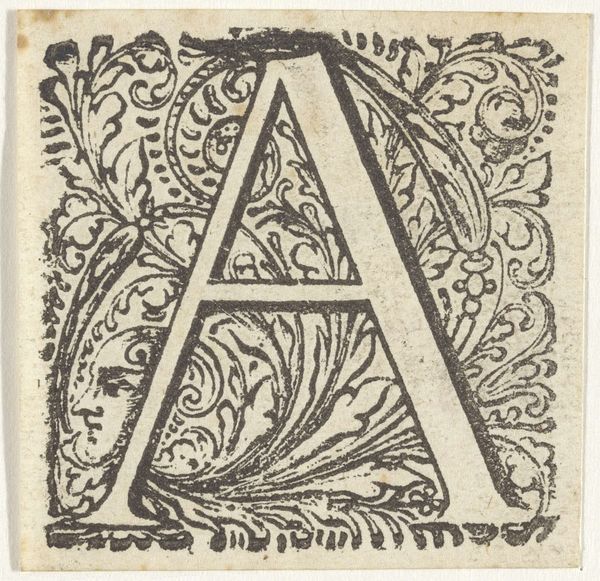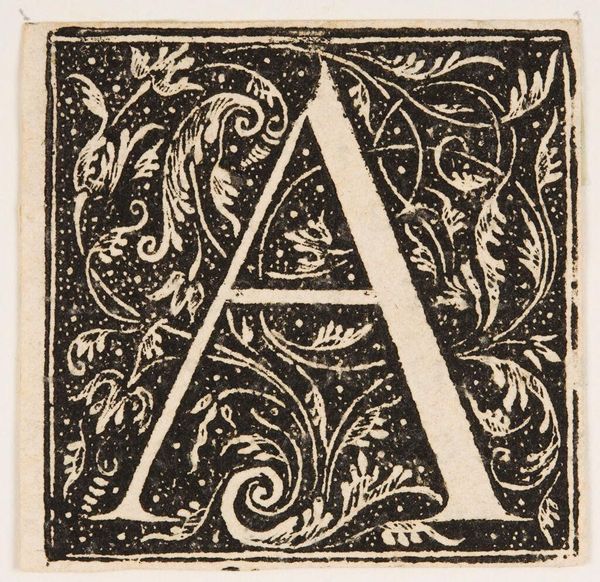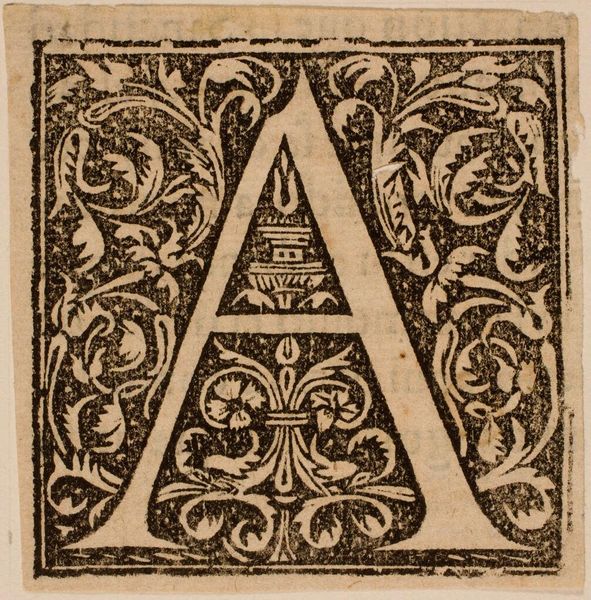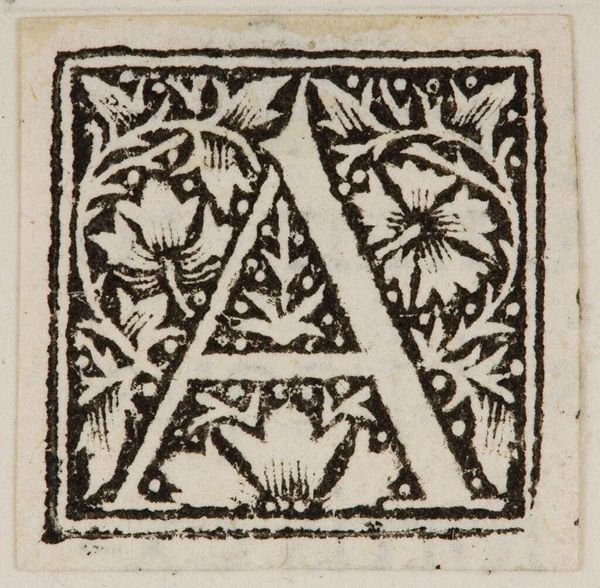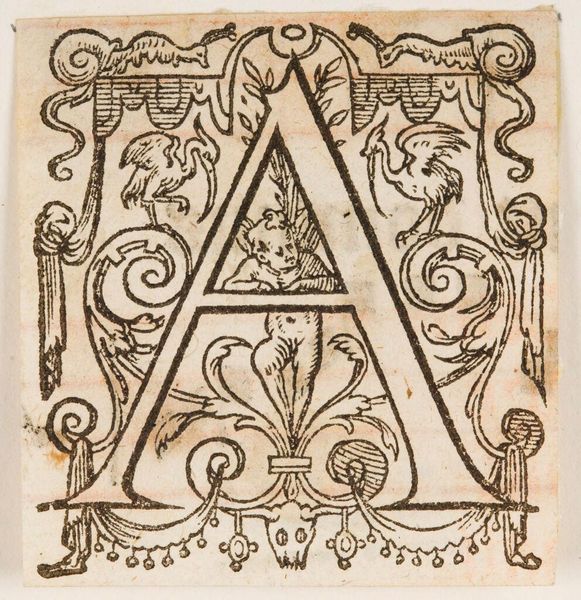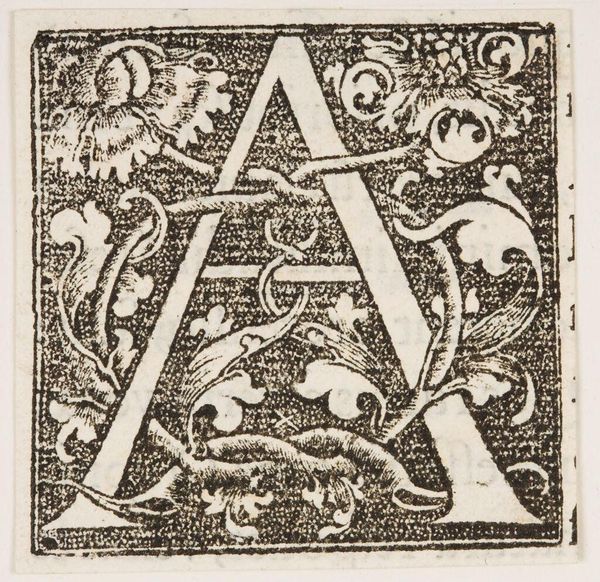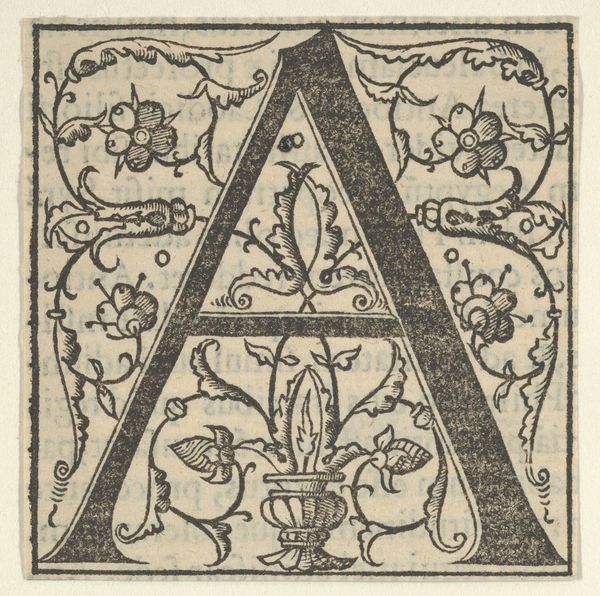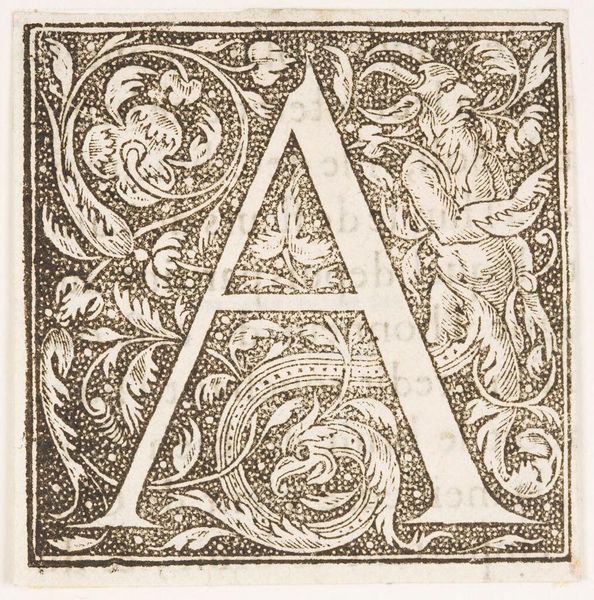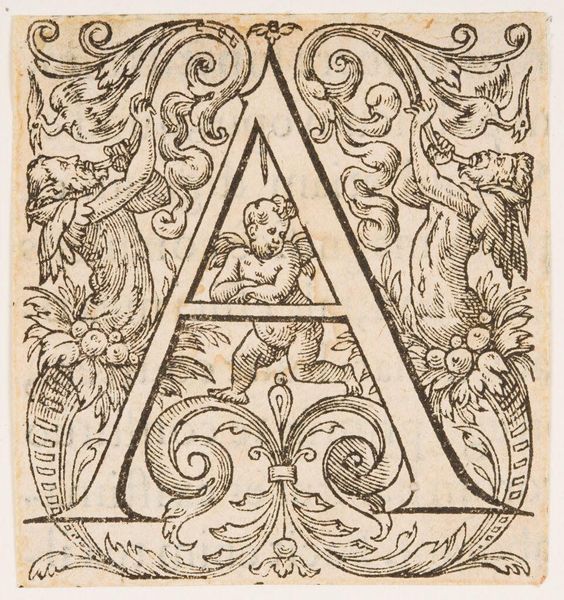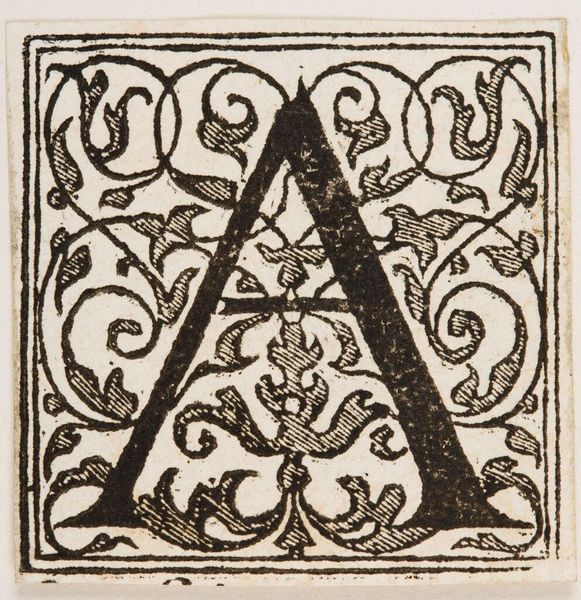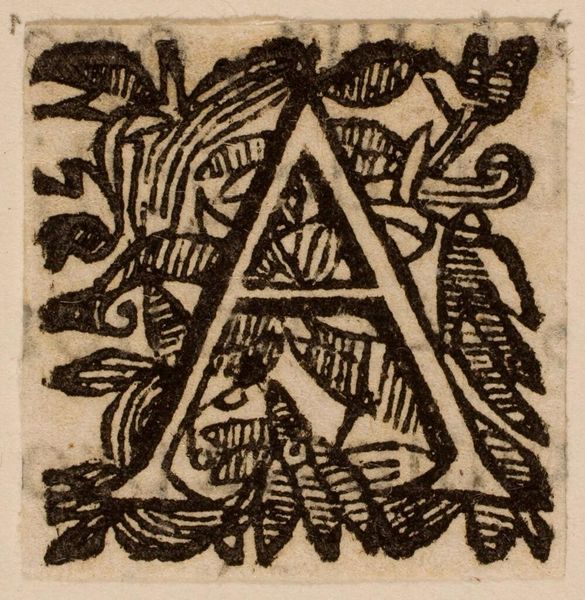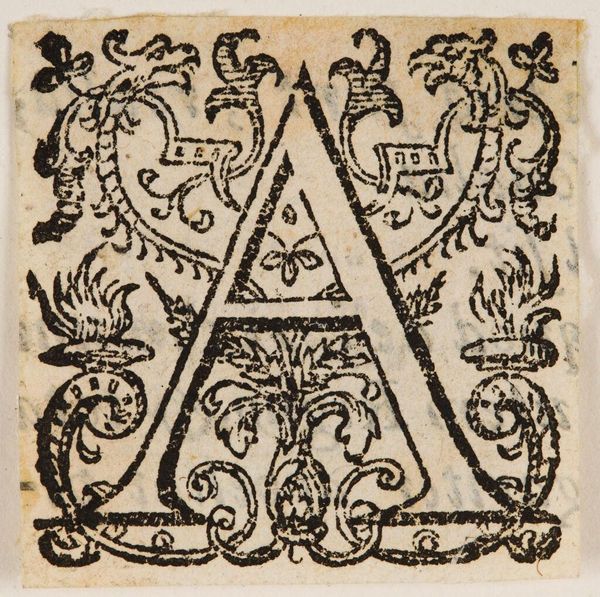
graphic-art, print, woodcut
#
graphic-art
#
pen drawing
# print
#
woodcut effect
#
figuration
#
11_renaissance
#
woodcut
#
northern-renaissance
#
calligraphy
Dimensions: height 34 mm, width 33 mm
Copyright: Rijks Museum: Open Domain
Curator: This image presents the letter "A" within a frame featuring two peacocks. It's a woodcut print, likely dating back to the 17th century and attributed to an anonymous artist. Editor: The stark contrast immediately grabs attention. It feels both opulent and rigidly structured. The interplay between the crisp letterform and the ornate details of the peacocks is quite striking. Curator: Indeed. The heavy lines characteristic of woodcuts imbue the work with a distinct graphic quality. Note how the "A" itself becomes a canvas for smaller, repeating ornamental patterns. We could even say it's the intersection of humanism and naturalism. Editor: What is really interesting about it for me is the symbolism in terms of class and luxury represented by peacocks in the Renaissance and the rise of humanist typography; together, they represent the intersection of societal ambition. The letter signifies education, status, and authority, right? Curator: Absolutely. This "A" serves less as a mere alphabetical character and more as a status symbol, embedded in a cultural milieu that valorized knowledge. We can also decode the positioning of the peacocks, whose bodies lead our sight to explore the edges. They represent, perhaps, beauty and vigilance in equal measure, fitting symbolic guardians of something precious. Editor: Looking at it from the perspective of art as an accessible commodity, this print presents an interesting paradox. While initial capital letters, often highly decorated, were used for official documents accessible to a small elite, here the artist has democratized their access and reach to wider audiences thanks to the power of print. What do you make of that? Curator: It raises critical questions about access to literacy and the visual language used to promote such cultural values in that specific time. It speaks to a growing ambition to not only safeguard knowledge but display it. Editor: Exactly. It almost encourages introspection on our values. This work invites us to reconsider how cultural elitism adapts when media democratize their access. Curator: This is what art should strive for, and what makes it such a unique piece. Editor: Ultimately, the piece prompts introspection, reminding us of the enduring relevance of questioning access, class, and representation in society.
Comments
No comments
Be the first to comment and join the conversation on the ultimate creative platform.
